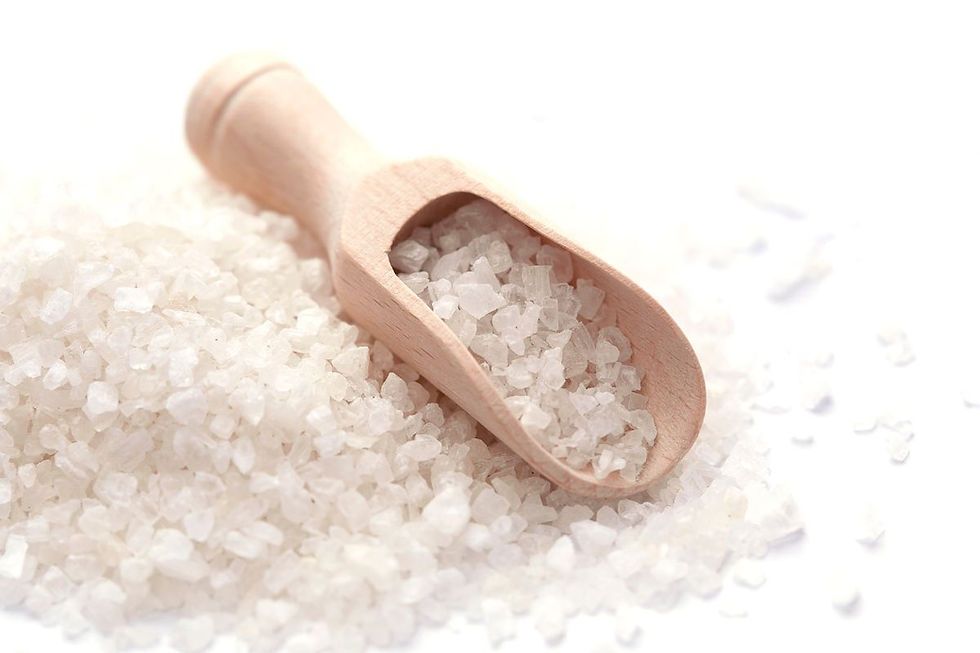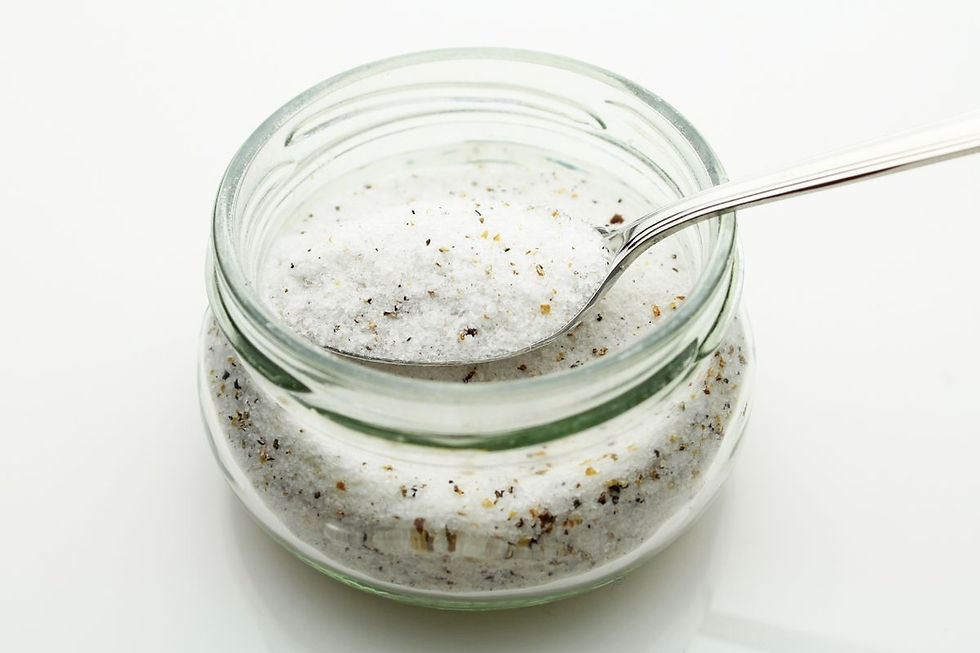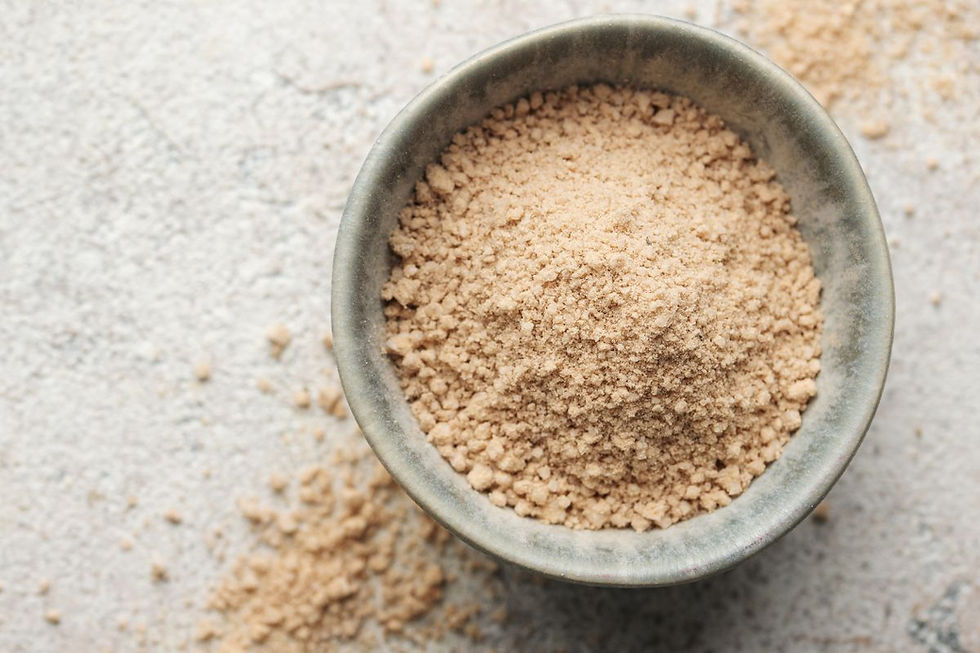12 Types of Salt and What They're Best Used For
- The Chef & The Dish
- Sep 20, 2023
- 5 min read
Updated: Dec 2, 2024
Salt is a fundamental ingredient in cooking that enhances flavors, balances sweetness, and can even be a preservative. Choosing the right type of salt for a particular dish or cooking method is essential to achieve the desired taste and texture.

Why is salt important?
While salt sometimes gets a bad reputation, salt is a critical and essential mineral in the human body. It has a number of important roles including maintaining proper nerve function, but it's also used in the regulation of fluids in your body. If you've ever had a salt craving, there's some research to show you may be dehydrated. But aside from the critical aspects of salt, for culinary purposes - there is little that is more important than salt in the flavor of food. It's a flavor booster that can take drab potatoes into a 5 star treat. Learning how to work with different types of salt can prove to take your meals to a whole new level.
How do you know when to use each type of salt and how much you should use?
Great question. And the answer is - we can't tell you. Yes, really! Merp, we know you came here looking for something different. If you ask each of our chefs, they will tell you the same thing. Each salt has different properties and while there are best uses for each, it's very difficult to tell you how much salt to use. The answer is based on the type of salt, the manner of how you're using it and your own taste buds. The best way to learn what works for your taste and the tastes of the people you're cooking for is to... cook. Trial and error is your best friend and taste, taste, taste.
Here are 12 types of salt commonly found in kitchens, and the best uses for each.
1. TABLE SALT
This is the most common type of salt, and it's what you'll find in most salt shakers. It's highly refined, with all impurities removed. It's best used for general cooking, baking, and seasoning dishes during or after cooking. As you read the label, you'll noticed the words "iodized." Iodized salt is table salt that has been fortified with iodine, a trace element that is essential for human health. Iodine is a crucial component of thyroid hormones, which regulate the body's metabolism and play a significant role in overall growth and development. A lack of iodine in the diet can lead to a condition known as iodine deficiency, which can result in thyroid problems, developmental issues, and various health problems, particularly in pregnant women and children.
Iodized salt was introduced as a public health measure to combat iodine deficiency disorders (IDD) in many parts of the world. Adding iodine to salt is an effective way to ensure that people receive an adequate daily intake of this essential nutrient, as salt is a common and widely consumed ingredient in many foods.

2. KOSHER SALT
Kosher salt has larger crystals than table salt, making it easier to pinch and sprinkle. It's a favorite among chefs for its ability to adhere well to food surfaces. It's great for seasoning meat before cooking and for brining. Kosher salt is typically mined from underground salt deposits and then processed to remove impurities. The name "kosher" refers to its use in koshering or preparing meat according to Jewish dietary laws, but it is not necessarily kosher-certified.

3. SEA SALT
Sea salt is harvested from evaporated seawater and comes in various textures and colors, depending on where it's from. It often retains some minerals and impurities, giving it a slightly different flavor profile. This process can result in sea salt that retains some minerals and impurities, giving it a unique flavor. It's excellent for finishing dishes, as a garnish, or for use in recipes where its unique texture and flavor are appreciated. Sea salt tends to be the most used salt with The Chef & The Dish chefs.

4. FLAKEY SALT
Flakey salts, like Maldon salt, have thin, flat, irregular and delicate crystals. They are sea salts that have a very beautiful look and delicate crunch that make them perfect for gourmet presentation and finishing touches on grilled meats and desserts.
5. FLEUR DE SEL
Fleur de sel is salt that forms on the surface of seawater as it evaporates. Traditional French Fleur de sel comes from the coast of Brittany in France. Other countries often discarded this salt historically, but the rise of gourmet culture has seen a rise in countries harvesting it - specifically Spain and areas in Mexico. When harvested from that region, they are termed "Flor de sal." This type of salt is used as a finishing salt.

6. ROCK SALT
Generally rock salt is intended in ways that aren't meant for human consumption, like - de-icing roads for example. That said, large, chunky crystals of rock salt are commonly used in ice cream makers for quick freezing, for making salt-crusted dishes like whole fish, or in preservation of meats and cheeses. Even rock salt intended for culinary use, the large crystals take time to dissolve, so it's not the best for use in day to day cooking.

7. PICKLING SALT
As the name suggests, this salt is used primarily for pickling and canning because it lacks additives like iodine and anti-caking agents found in table salt. It's particularly useful when fermenting as additives can inhibit the process of maintaining healthy bacteria.

8. HIMALAYAN PINK SALT
Mined from the Himalayan mountains mostly in Pakistan, this salt is known for its striking pink color due to its mineral content, particularly iron. It comes both finely ground and in larger rocks which can be grated at the table to add some entertainment and gourmet flair. It is often used as a finishing salt. It has a mild, subtle flavor and is best used for seasoning and garnishing, although some people also use it for cooking and grilling. It's believed it has superior nutritional qualities, but those claims are largely unbacked by research.

9. BLACK SALT
Black salt, also known as kala namak or Indian black salt, is a type of volcanic rock salt that is typically found in South Asia, especially in India, Pakistan, Nepal, and Bangladesh. Despite its name, black salt is not actually black in color but is more of a dark purple or pinkish-gray hue when ground into fine particles. It is known for its distinctive sulfuric and pungent "eggy" aroma and flavor, which makes it a unique and sought-after ingredient in various cuisines, particularly in Indian and Southeast Asian cooking. It adds a touch of umami, but be careful, it can be quite powerful so use it sparingly.

10. SEASONED SALT
These are usually blends of salt with herbs, spices, and other flavorings often found in gourmet grocers. They're convenient for adding complex flavors to dishes with a single sprinkle.

11. SMOKED SALT
This salt is smoked over wood fire,s sometimes for weeks, to infuse it with a smoky flavor. It's a fantastic choice for adding a smoky depth to grilled or roasted dishes which play well with meats and vegetables and stews. This hickory smoked salt would be a nice choice for ribs, pork or turkey.
The type of salt you choose should depend on the specific dish you're preparing and your personal preferences. Remember that different salts have varying levels of salinity, so it's essential to taste as you go and adjust accordingly. Ultimately, experimenting with different types of salt can be a fun way to learn, so we challenge you to add a new salt to your cooking repertoire.
ABOUT THE CHEF & THE DISH
The Chef & The Dish has chefs around the world that you video conference into your kitchen for a private 1:1 virtual cooking class. Learn how to make pasta with a chef video calling you live from Italy, Pad Thai with a chef virtually in your kitchen live from Thailand. Together you cook, share stories, laugh and make a multi course meal together. Rated 'Best Date Night,' 'Best Gifts,' and "Best Cooking Classes" by WSJ, Forbes, Vanity Fair, Martha Stewart, Rolling Stone and tens more. Transport your kitchen for the day.™














Comments